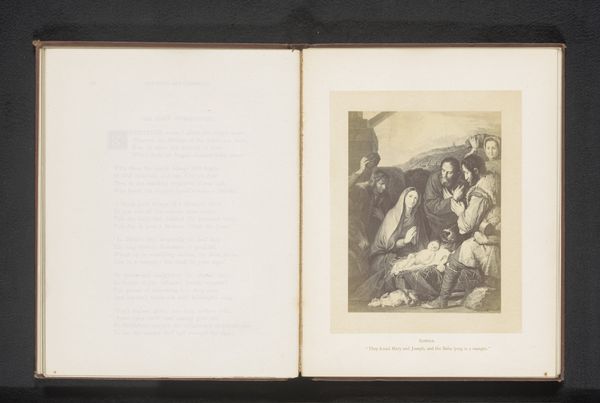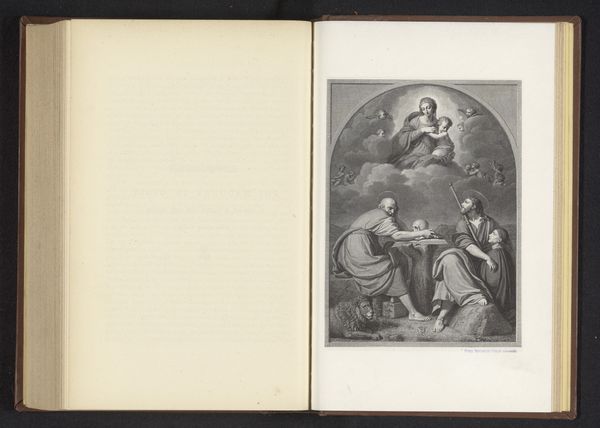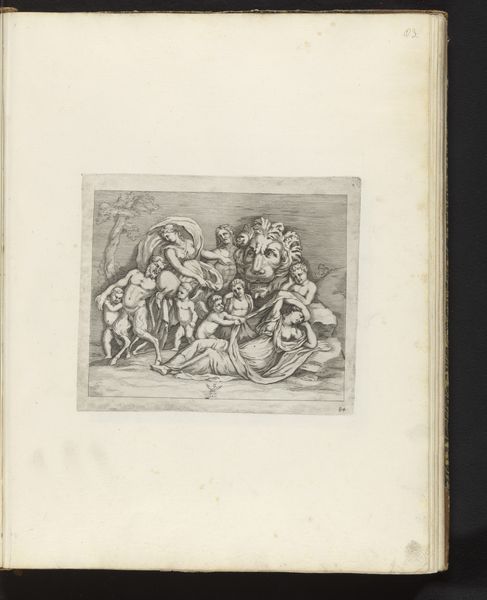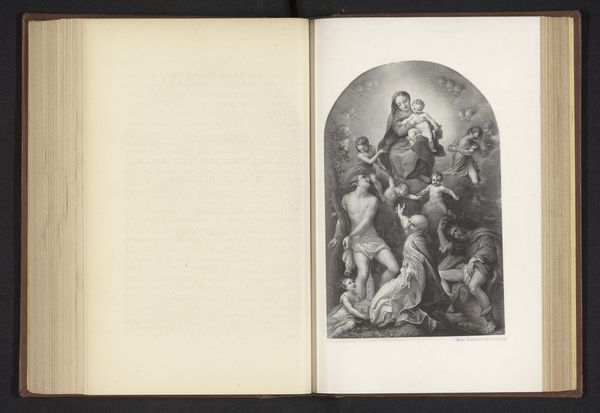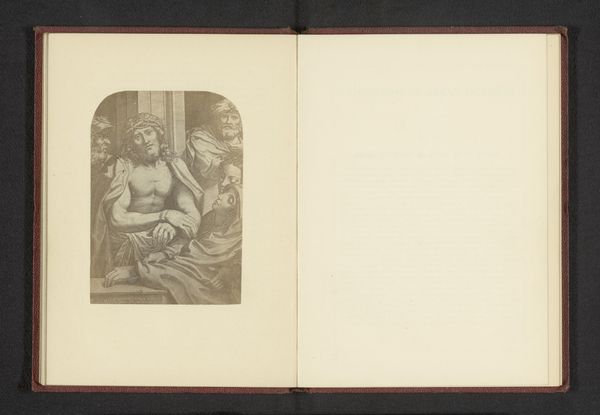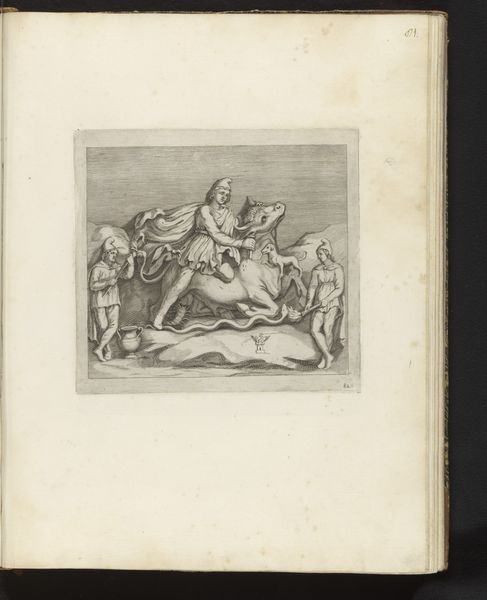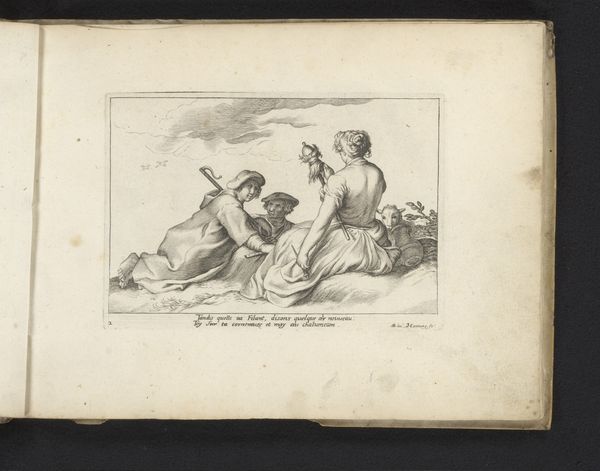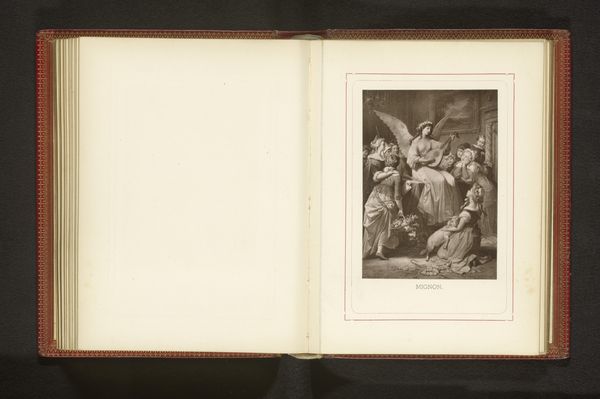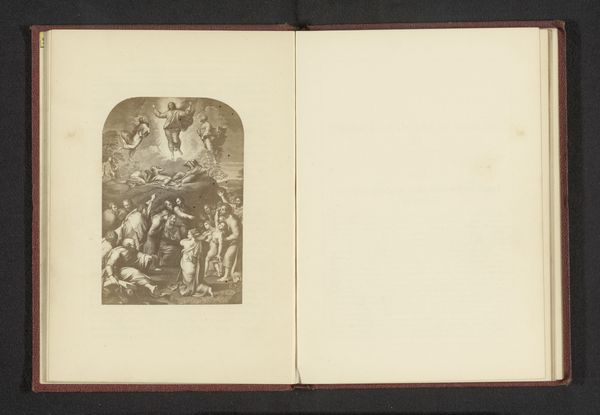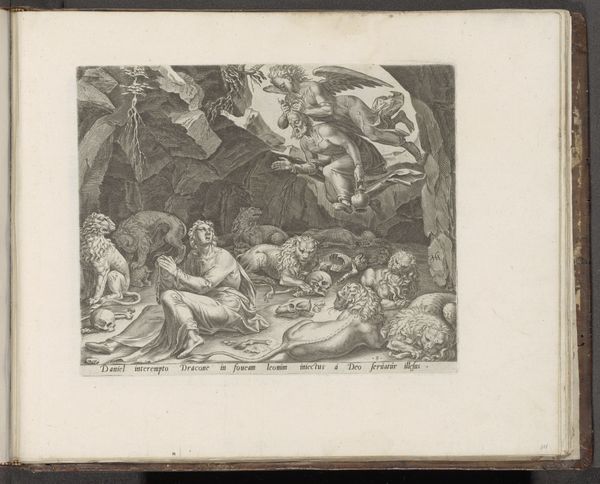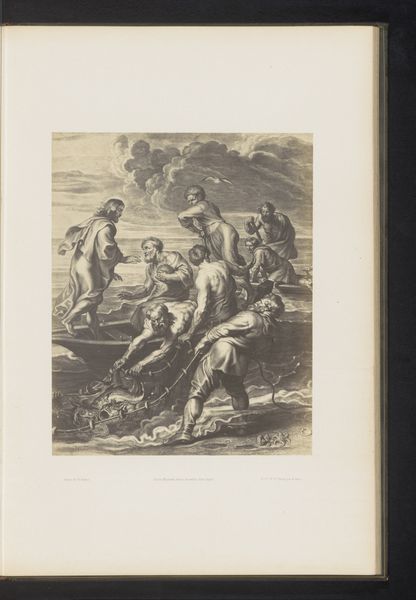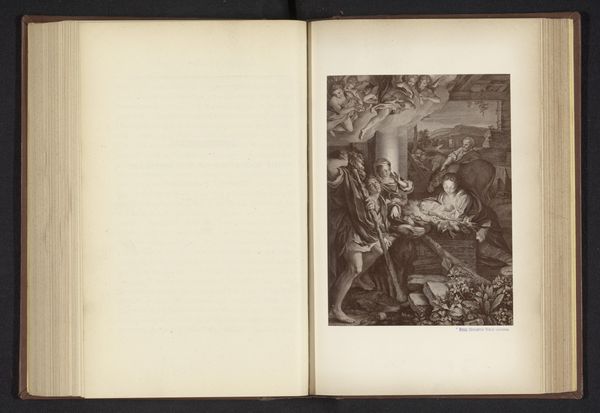
Fotoreproductie van een prent naar het schilderij Madonna van de heilige Hiëronymus before 1876
0:00
0:00
anonymous
Rijksmuseum
print, paper, engraving
#
ink paper printed
# print
#
figuration
#
paper
#
history-painting
#
italian-renaissance
#
engraving
Dimensions: height 173 mm, width 120 mm
Copyright: Rijks Museum: Open Domain
Curator: Here we have a photo reproduction of a print derived from the painting "Madonna of Saint Jerome," created before 1876 by an anonymous artist. It's currently housed here at the Rijksmuseum. Editor: Immediately striking, even in monochrome, is the density of figures clustered within the composition. There’s a clear hierarchy created, likely through the printing process itself. Curator: Indeed, this image invites exploration into the symbols and historical weight. Saint Jerome, the Madonna, the children... it’s a complex constellation of religious and historical significance rendered through Italian Renaissance aesthetics. It makes me consider the transmission of values. Editor: And let's not forget the labor involved in both the original painting and this later print. An engraving requires meticulous work; translating colour into line, texture and the tonal gradations created from layers of ink on paper. You can almost feel the artisan’s hand. Curator: The layering adds a new dimension to how we interpret the scene. For instance, observe how the maternal love is emphasized: the Virgin, flanked by children and saints, becomes an archetypal symbol of compassion. Consider how this simple image taps into universal themes. Editor: But is it really *simple*? What processes created that very smooth paper, the ink to stay legible for such a long period. I think often in terms of resource extraction in any visual form and reproduction like this meant it could be accessed widely. What would accessibility like that really mean in 1876? Curator: A critical point to remember. It's easy to detach historical artworks from their place, from their cultural position. This work prompts one to think about visual traditions but also who could read, consume and learn through devotional reproductions such as these. Editor: Seeing the layering and figuring out all of that would just fascinate anyone interested in history and production; looking at the engraving so deeply, invites us all to ask about access to art from then until now. Curator: A layered approach certainly enhances the artwork’s impact, providing avenues to discuss broader questions. It's really quite compelling.
Comments
No comments
Be the first to comment and join the conversation on the ultimate creative platform.

